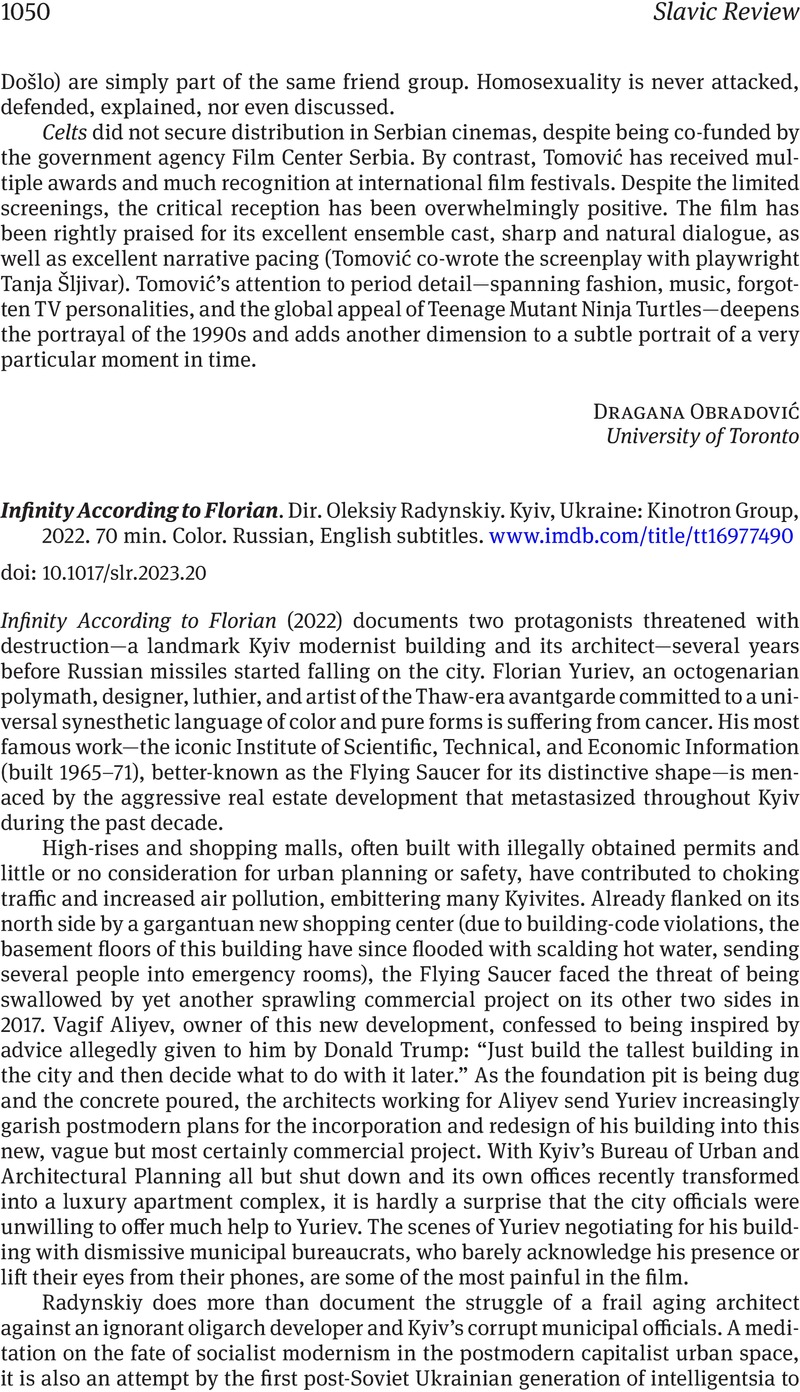No CrossRef data available.
Article contents
Infinity According to Florian. Dir. Oleksiy Radynskiy. Kyiv, Ukraine: Kinotron Group, 2022. 70 min. Color. Russian, English subtitles. www.imdb.com/title/tt16977490
Review products
Infinity According to Florian. Dir. Oleksiy Radynskiy. Kyiv, Ukraine: Kinotron Group, 2022. 70 min. Color. Russian, English subtitles. www.imdb.com/title/tt16977490
Published online by Cambridge University Press: 12 May 2023
Abstract
An abstract is not available for this content so a preview has been provided. Please use the Get access link above for information on how to access this content.

Information
- Type
- Film Reviews
- Information
- Copyright
- Copyright © The Author(s), 2023. Published by Cambridge University Press on behalf of the Association for Slavic, East European, and Eurasian Studies

